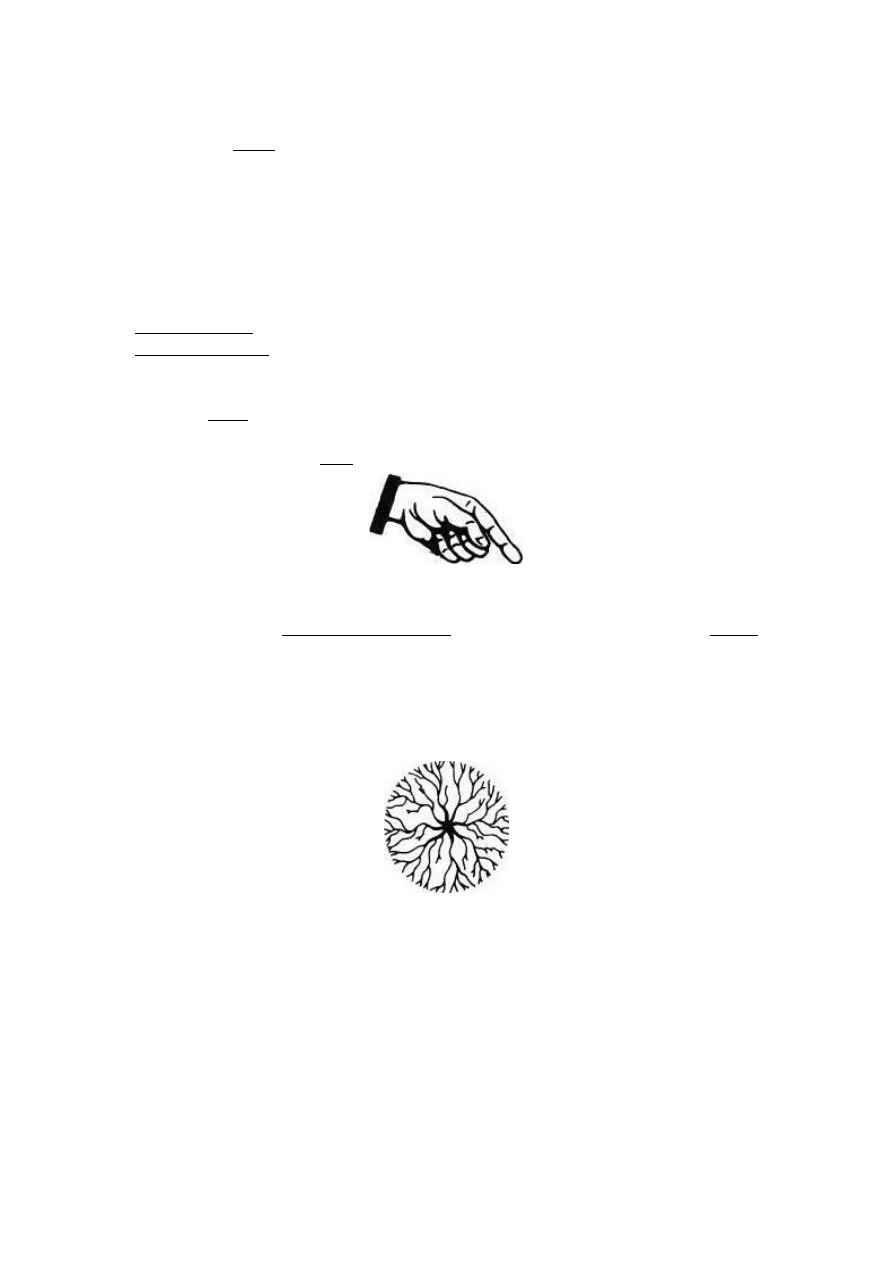
STICKS & STONES NUMBER 4
A leaflet for the left hand
Getting Lost in the Shuffle
Agreed: The subject of Riffle Shuffling is complex. Many claim to
fully understand the. Real Work. Few do.
The Shank Shuffle controversy was a learning experience. I edited
and published Marlo's controversial treatise about five years ago.
There were Underground tremors from coast to coast. The Inner
Circle buzzed and balloon-like egos bobbled in bunches. There were
harsh words and some hard sayings. A lawsuit was proposed and
dropped. Gossip. Estrangement. Private speeches. Then like all
controversies it predictably fizzled. The principal agonists--Ed Marlo
and Herb Zarrow--never clashed or met face-to-face. Marlo's book
and "argument" speaks for itself. There were no formal, public
refutations or rebuttals. What a shame! Here was another
opportunity for the so-called community of experts to intelligently
examine a subject that cries for clarification, a subject that needs to
be fully explored and analyzed. It didn't happen.
Point 1: Vladimir Nabokov writes in Strong Opinions that "reality is
a very subjective affair. He defines it "as a kind of gradual
accumulation of information and as specialization." What is the
reality of false Riffle Shuffles? Good question.
Point 2: Herb Zarrow has a safe and well-earned reputation,
particularly on the East Coast. His contribution to card magic has
been obviously established and his unique riffle shuffle contribution
is well-known. His silence is disturbing. He should publish his
private research concerning false shuffles. He should publish his
side of the Shank Shuffle controversy.
Point 3: In March of 1975 I wrote an article called "Getting Lost In
The Shuffle". This was originally included in a book planned for
publication. The book was published. The article was suppressed.
Since I'm against this kind of censorship, I'm publishing the
squelched article here...

Welcome to the club! There must be a legion of lost shufflers. It's
easy to become bewildered studying the Riffle Shuffle. Information
is scattered here and there, technical descriptions are often
sketchy, and nomenclature is not uniform. The definitive work,
Marlo's Riffle Shuffle trilogy (Riffle Shuffle Systems - The Patented
Shuffle -Riffle Shuffle Finale), is a semi-private and expensive
study. Furthermore it's too detailed and recondite for average
students. Its style will put casually interested readers to sleep.
Likewise the trilogy's structure is not wholly systematic, nor do they
embody a memorable unity. They must be read several times.
Every element, part, and detail must be retained, then mentally tied
together. Each reader is responsible for seeing unwritten
implications. Since Marlo's Trilogy was released and xeroxed copies
were eventually circulated, little research has been published. Karl
Fulves has published several monographs, but his contributions
have further complicated and muddled the subject. At this point we
don't need more information. We need to consolidate, simplify,
unify, and systematize all the information already published.
Let's get down to basics. What is a Riffle Shuffle?
A Riffle Shuffle is a mixing procedure characterized by having two
portions of squared cards randomly riffle-meshed together. This is
done by using the thumbs, each specifically placed on its respective
portion, to riffle off cards in a releasing action so they interlace and
become intermixed. This interlacing always occurs in a partial
manner, i. e. only the corners, ends, or sides mesh rather than the
whole card. Once the portions are interlaced, they're pushed
together in a squaring action.
This sounds simple, but there are many ways to accomplish what's
basically a three-step action: (1) The initial cut or separation of
portions; (2) The actual mode of interlacing the portions; (3) The
final square-up or subsequent cutting actions.
What is a FALSE Riffle Shuffle?

Now things get hairy! A genuine Riffle Shuffle causes the order of
the cards to be changed in a random, unspecific way. A deck is
literally a many-layered object consisting of fifty-two individual and
separate cards held as a squared unit. The positions of these layers
(for the most part) change during a genuine shuffle. The order of
the cards is physically changed or altered. In a false shuffle two
aspects are false: (1) Its appearance: the cards look like a real
shuffle when they're being maneuvered. (2) Its result and purpose:
The result is that all or parts remain unchanged. Its purpose is to
produce this result.
I once argued with Marlo that eight Out Faro shuffles was not false
shuffling. We were both right and wrong. It's a matter of semantics
and interpretation. The purpose of eight Out Faro shuffles is to
produce a deck's original order after shuffling. The shuffling,
however, is genuine and not false. The result is the same, but the
means of achieving it is different. In most false shuffles the order of
the cards is retained. In perfect Faro shuffles the order is regained
in a precise, cyclic way. Again: The Faro shuffle is a true one--the
cards are perfectly interlaced and squared.
To phrase things more succinctly: A false shuffle consists of actions
that seem to emulate a genuine riffle shuffle, but wherein one or
more secret actions nullify or invalidate the real ones. These secret
actions must occur during one or more of the three basic stages of
a riffle shuffle, i. e. the Initial Cut or setting-up of portions, the
interlacing of the cards, and the square-up or subsequent postlude.
Let's examine some false Riffle Shuffles.
THE STRIP-OUT & PUSH-THROUGH
These shuffles are akin. Both feature similar actions. In Initial Cut
or setting-up is fair. The portions are genuinely interlaced. The
secret, nullifying actions take place as the portions are pushed
together and apparently squared, and more importantly during the
final cut (s).
In the Strip-Out the portions are not fully squared. The longitudinal
sides are flush and squared, but the narrow ends are not. One
portion remains in an end-jogged condition known as the strip-out
condition. This jogged portion is stripped out in a simulated cutting
action. In other words, the portions are pulled or drawn apart. The
jogged portion moves away as a squared unit while the other
portion remains stationary as a squared unit. When the cut (?) is
completed, the original order of the deck is retained. Strictly
speaking, the Strip-Out and Push-Through shuffles are true. The
simulated cut is false. The cards are actually interlaced. The false
cut unlaces (nullifies) the portions.

In the Push-Through Shuffle the setting-up procedure and riffle-
interlace are fair; however, the right-hand portion is not
maneuvered into a strip-out condition. Instead it's pushed through
the left-hand portion. This also exchanges the portions (from right
to left). The final simulated cut, of course, is like the "stripping
action" of the Strip-Out Shuffle.
NOTE: The above explanations are necessarily very brief and
rudimentary. Fine points and bits of finesse are not described. One
can limn at great lengths about Block Transfers, Center Transfers,
Delayed Strip-Outs, Partial Strip-Outs, Riffle Stocking, Run-ups, and
so on. These are adequately covered by Marlo in his Trilogy. Other
riffle shuffle experts haven't published their findings. Their lips are
sealed or they're bluffing.
THE ZARROW SHUFFLE
Herb Zarrow introduced his shuffle in 1956, calling it "Full Deck
Control By A Riffle Shuffle." It appeared in The New Phoenix #346.
Zarrow combined known principles and dynamics to produce a false
shuffle that didn't feature a follow-up to nullify a real interlace, nor
did it use push-through or strip-out dynamics. Yet his shuffle
retained the order of a full deck.
The Zarrow shuffle is characterized by its center block pull-out to
divide the deck into two portions prior to their interlace. These
portions are apparently riffle-meshed together and the cards are
squared. How? Simple.
The center block is pulled out to the right. The portions are actually
interlaced, but these meshed portions are secretly disengaged.
During the square-up the original center portion (block) rides back
into place.
THE SHANK SHUFFLE
This shuffle is easy to confuse with the Zarrow shuffle. If a standard
Shank shuffle is executed, the operator must do it twice to achieve
"full deck control". Marlo has a variation with a follow-up cut that is
done only once. Neither variation uses a center block pull-out.
Technical details of this shuffle are included in Marlo's The Shank
Shuffle (1972). This same treatise explains the differences between
Zarrow and Shank dynamics, adds applications, and features further
arcana. Marlo also explains how the Shank shuffle is more flexible
when it comes to block transfer applications and other maneuvers.
Here's one of the biggest problems in the Zarrow Shuffle
Controversy: When we call a certain dynamic by name, we often
muddle our definitions. Ever since Zarrow's shuffle made itself felt
in the closed community of experts, its actions and actions like it

were automatically called Zarrow actions. The word "zarrow" started
an adjective, then became a noun and verb. ("He did a Zarrow..."
"Now Zarrow underneath the held-back block...") Any handling
using block cover and disengaged corners was considered
Zarrowesque. I can understand this and Herb should be given credit
for his unique contribution. His Phoenix article and expert model
inspired other cardmen to reconsider principles and dynamics long
ignored. But let's stick to the facts, giving credit where credit is due.
Herb Zarrow did NOT create the idea of secretly disengaging
interlaced cards under block cover. He didn't create block transfers.
He didn't create the center block pull-out dynamic. These elements
were already in the published Record. Zarrow's special contribution
to Riffle Shuffle arcana consists of combining these established
elements in a detailed and technical manner. He also demonstrated
through his own expertise the possibilities and potentialities
inherent in such a potent combination.
Readers may be asking, "Where are these elements previously
published?" Fair enough question. Try these:
THE EXPERT AT THE CARD TABLE (Erdnase)
"...the deck is separated into two packets, the thumbs riffle the
inner corners together, the left fingers are shifted across the
bottom, the right thumb spreads the top cards over the left hand
packet, and the right hand brings the outer ends of the two packets
towards each other, twisting out the interlocked corners and placing
the right hand packet again on top in much the same manner...the
more fanwise the packets are spread during the operation the more
perfect the blind."
THE L.W. FALSE SHUFFLE (Genii magazine February-1937)
"The inner corners of the outer ends of the packets are brought
together, the right hand packet being held about half an inch in
advance of the other. The thumbs riffle these corners together, but
with the left thumb releasing its cards more rapidly than the right,
so that about half a dozen cards from the right hand packet fall on
top. The corners of the packets are interlocked only to the slightest
extent. Now while the packets are held in the same relative
positions...the positions of the hands are shifted so that the first
and second fingers of each hand lie alongside the outer ends of the
respective packets, completely concealing these ends. The right
thumb now presses on the free cards on top of its packet so that
they are fanned out to the left, forming a mask for the move to
follow. The packets are apparently squared around side by side and
the cards are pushed into each other, flush. Actually, in bringing the
packets around so that they lie side by side, the interlocked corners

are disengaged... the two packets are pushed flush with the right
hand cards going on top of those in the left."
MORE MAGIC OF THE HANDS (Edward Victor)
"The packets are brought together and their inner top corners are
riffled into each other with the thumbs; the corners should "The
packets are brought together and their inner top corners are riffled
into each other with the thumbs; the corners should not overlap
more than half an inch... The portion in the left hand must be riffled
a little quicker than the one in the right hand, so that at the end of
the riffling movement there are about eight to twelve loose cards
laying on top of the left hand portion across to the left so that they
cover both packets... as these cards are pushed across, the right
hand portion is tilted slightly upwards at the end nearest the body
and then twisted outwards, pressing the inner sides of the two
packets together. This action will free the interlocked cards. The
unlocking of the riffled pack is completely masked by the loose
cards spread across the top of the packets. As soon as the two
halves are disengaged, the pack is squared up, and the false shuffle
is completed, leaving the pack in its original order."
We get back to Erdnase and Victor in HILLIARD'S CARD MAGIC or
GREATER MAGIC with "The Inverted V Shuffle". Here the riffle
shuffle is a Dovetail with the outer ends being shuffled as per the
old-fashioned way. It, too, uses "spread cover" and "disengaged
corners" even though performed in the hands. (Note: A tabled
variation is mentioned.)
There are more sources than the ones already cited, including the
recent version in Harry Lorayne's RIM SHOTS called "Old Reliable".
My whole point is to show previous, established sources clearly
describing shuffle dynamics now associated with Herb Zarrow. As
mentioned earlier, Zarrow COMBINED these elements and published
an exacting handling/procedure in the Phoenix. This is the Zarrow
Shuffle, gentleman... Nothing more, nothing less.
Serious students should now consider the necessity for
consolidation, simplification, unity, and systematization. At this
stage of the game each riffle shuffler must do his own work.
Perhaps someday a definitive study will appear—one that's
comprehensive, honestly annotated, precisely organized, and clearly
written. The slipshod salmagundi cranked out in Teaneck misleads
beginners and amuses experts. Perhaps Dai Vernon and Charlie
Miller will tip. Perhaps Herb Zarrow will publish his findings and
feelings. I hope so. In the meantime, many are truly lost in their
shuffling...
Your move, Karl.

- Jon Racherbaumer, March - 1975
AENOS
Today there are fewer Faro Finaglers and more Riffle Shufflers in
frenetic pursuit of greater Triumphs. Cardmen seem smitten with
"Triumph", but somewhere along the way they've lost sight of
Vernon's original approach to the effect.
Some cardmen became infatuated with mechanical razzle-dazzle
and raw technical elements. Consequently we now see versions that
feature repeated topsy-turvy shuffles, umpteen cuts and turnovers,
and procedures that would elude instant-replay cameras. Confusion
is not sophistication. Complication is not virtuosity.
Vernon presented "Triumph" with directness and clarity. In other
words, he gave the deck one topsy-turvy shuffle, thus creating a
condition difficult for a magician to overcome. To right the cards
without any visible action is impossible. Vernon would show the
apparent topsy-turvy condition, then immediately ribbon spread the
cards to show them facing one way. Miracle time!
Pick up a deck. Divide it into two portions, turn one portion face-up,
and riffle shuffle both portions together ala "Triumph". Ribbon
spread the cards. They're pretty fouled up, aren't they?
Do you think they're going to get more fouled up with extra
shuffles? No way. Over the years I've played around with many
variations of "Triumph", testing each version on lay audiences. I've
concluded that complicated, involved procedures using many
shuffles, cuts, and turnovers subverts the effect, Such an approach
creates a NON-MAGICAL climax. Instead it produces a
demonstration of sheer manipulative skill. The audience forms a
hard-headed generalized solution that goes something like this:
"He straightened out the cards DURING all those shuffles and flip-
flops and general monkey-business!"
The audience is unfortunately correct. They may smile and nod at
your superb juggling feat, but the sense of magic is gone. Get out
your copy of Stars of Magic and reread the Vernon method,
including its patter approach. You may learn something.
I Need a Magic Wand
Once again Marlo's mind is at work. This version was inspired by
"Hands Off Reverse" from Hierophant #7--an effect that received
acclaim from high places. Marlo's approach features subtleties not
found in the original.

EFFECT - A card is freely selected and the spectator inserts his
selection into the center of the deck; however, he does this with the
cards behind his back. The magician asks the spectator to hand him
a card to use as a make-shift "wand". After some by-play the
performer hands the spectator the card case and asks him to case
the deck, once again making these actions behind his back. While
the cards are in the card case, despite the fact that the performer
hasn't handled the cards, the selection magically turns face-up!
WORKING
1) Secretly reverse any X card on the bottom of the deck. Shuffle
the cards and retain the bottom card. Spread the cards between
your hands for a free selection. As the spectator looks at his card
turn the deck over. Easy way: After the selection is removed and
the cards are squared, casually drop your left hand to your side.
Look at the spectator as you quickly flip the deck over. The whole
business takes a couple of seconds.
2) Hand the deck to the spectator and tell him to place it behind his
back. Tell him to insert his Selection into the center of the deck.
Say, "I don't want to see where you place your card..." (This verbal
ruse explains the behind-the-back business.) At this point the
spectator is holding a face-up deck with a face-down card on top
and a face-down selection somewhere near the center.
3) While he's holding the cards behind his back with both hands,
say: "I'm going to need a magic wand... I'll tell you what... let's
improvise... Hand me the top card of the deck. Leave the rest of the
cards behind your back... just bring the top card forward..."
4) As soon as the spectator hands you the top card (which will be
face-down), turn it face-up. Look at the spectator throughout this
activity, making relevant commentary on what's happening. At this
point, of course, you've taken care of one improperly faced X card.
The spectator now holds a face-up deck with his selection already
reversed in its center. The spectator assumes that ALL the cards are
face-down.
5) Here comes your diversion. Direct attention to your impromptu
"wand"--the face-up X card in your left hand. Turn the card face-
down as you say, "Turn the deck over in sympathy with the
wand..."
6) Turn your wand-card face-up as you tell the spectator to "turn
the deck over again." Turn your wand-card face-down as you ask
the spectator to repeat the process. Explain that the "turning
process" affects the cards in a strange manner.

7) Hand the face-down wand-card to the spectator and tell him to
replace it back on top of the deck. Hand him the card case and
instruct him to case the cards.
8) You're now clean and after some appropriate mumbo-jumbo you
can disclose the reversed selection. Have the spectator remove and
handle the cards, retaining the "hands off" approach of the original
version.
- Edward Marlo, June 4, 1976
Marlo Note: The initial steps in "Hands Off Reverse" from
Hierophant #7 can be reduced by freely shuffling a known card to
the bottom of the deck. At Step 3, when you explain that the
spectator is to place the cards behind his back, you place the cards
behind your back and do the following: Your left thumb merely
revolves the known bottom card as the deck is simultaneously
turned face-up with one hand.
These pages are wrought by JON RACHERBAUMER. Don't blame
anyone else for STICKS & STONES and please don't write that other
publisher. He has enough problems of his own. Send your
comments, ideas, effects, complaints, and damnations to:
P.O. Box 1142, Metairie, Louisiana 70004
Send kudos and coins to Lloyd Jones!
Document Outline
Wyszukiwarka
Podobne podstrony:
Jon Racherbaumer Sticks & Stones Number 2
Jon Racherbaumer Sticks & Stones Number 3
Jon Racherbaumer Sticks & Stones, Vol 1
Jon Racherbaumer Sticks & Stones, vol 6
Jon Racherbaumer Sticks & Stones, vol 5
Ed Marlo & Jon Racherbaumer Classical Foursome
Jon Racherbaumer Tri Psi
fall leaves cal numbers2
Does the number of rescuers affect the survival rate from out-of-hospital cardiac arrests, MEDYCYNA,
Numbers vocab
numberpatterns2
Leaf and Apple Calendar Numbers
Kenton Knepper Lucky Number
Zadanie 5 Zadanie na Kozaka number PPięć
The cutting sticks problem
numberitsalgebra00leferich
numbers counting 23
więcej podobnych podstron